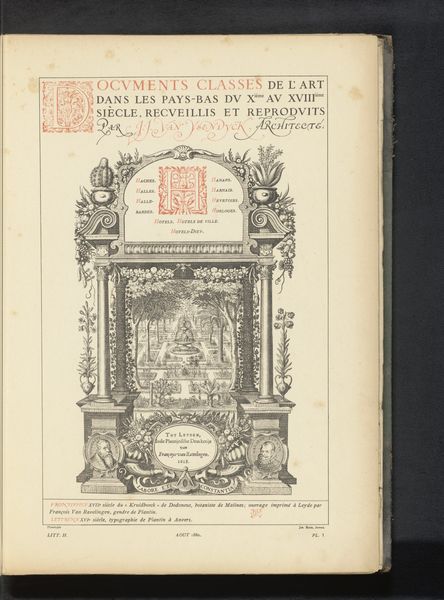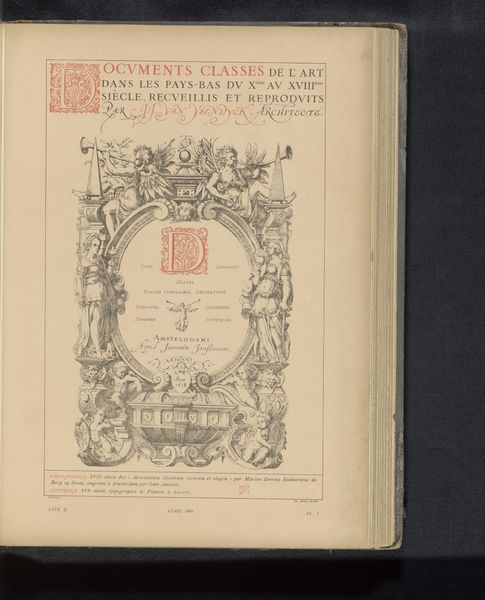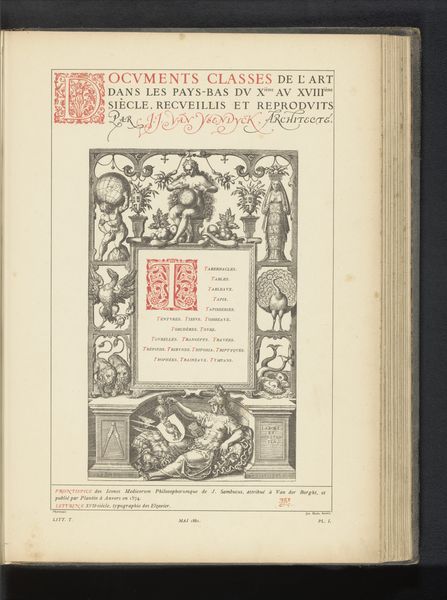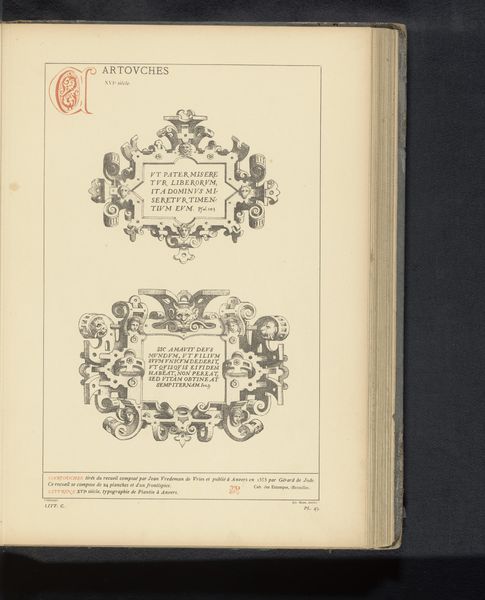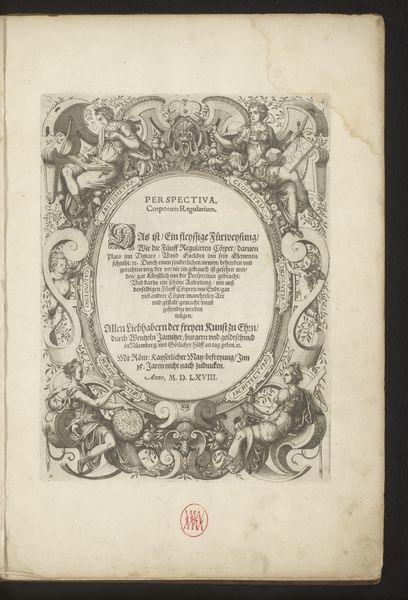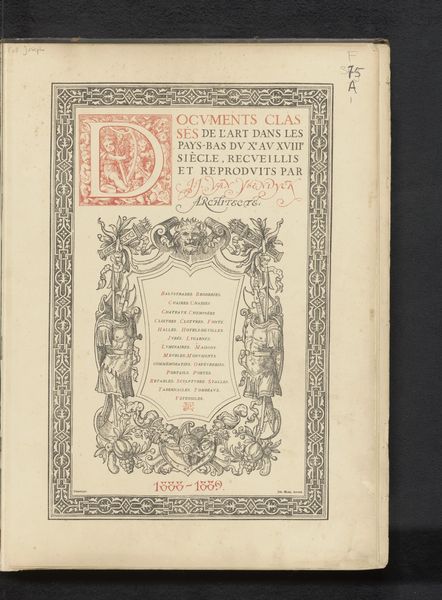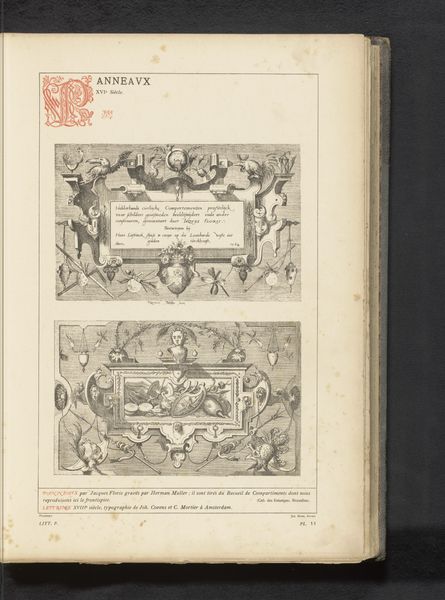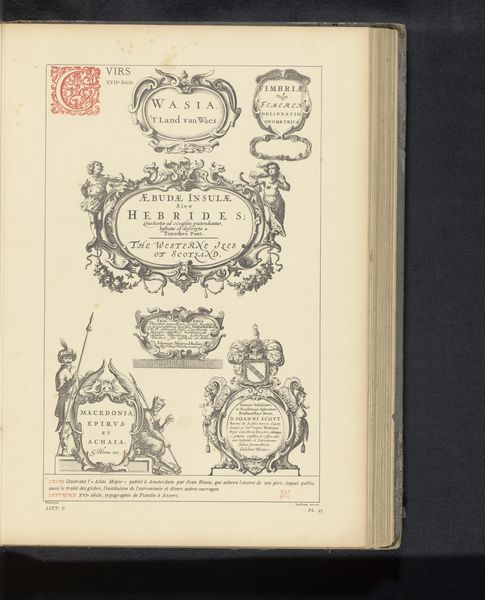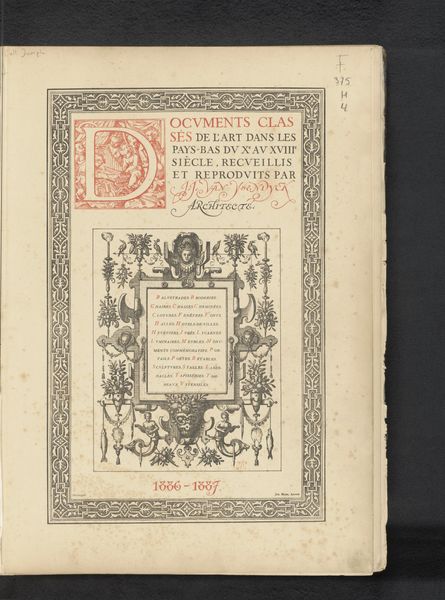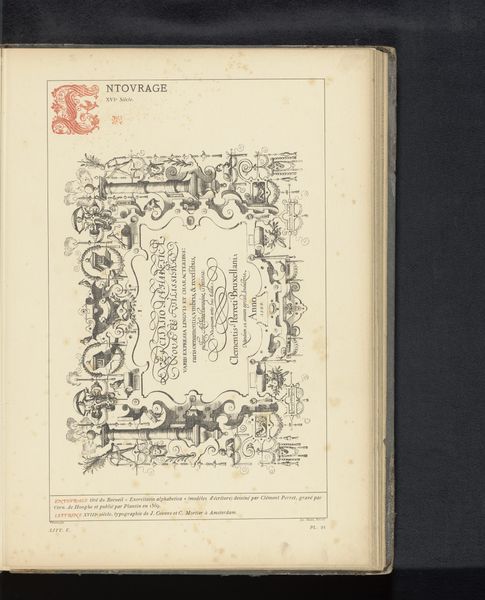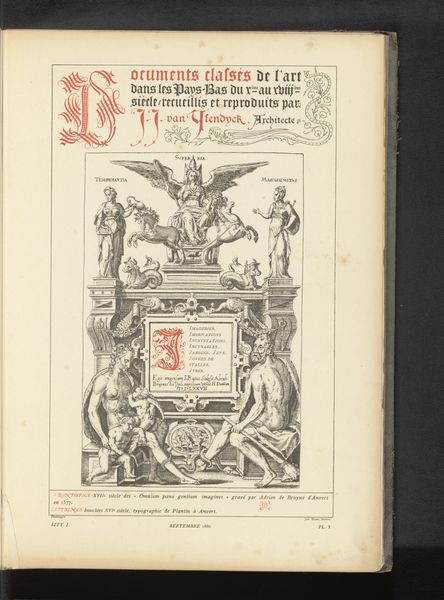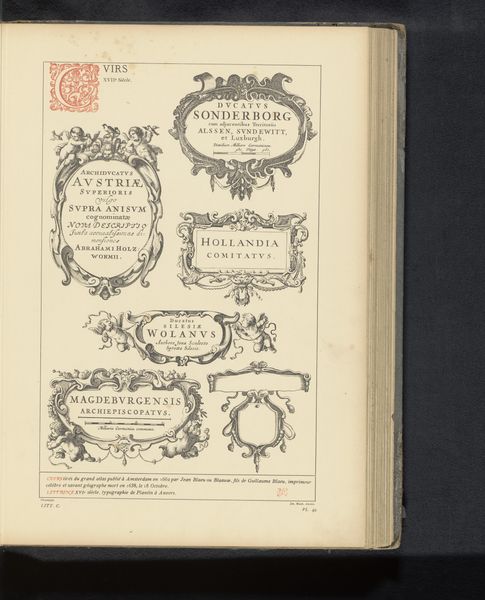
Reproductie van een titelpagina met een omlijsting met schilderspullen door Adriaen Collaert before 1881
0:00
0:00
graphic-art, print, engraving
#
graphic-art
#
aged paper
#
book binding
#
homemade paper
#
paper non-digital material
#
paperlike
# print
#
sketch book
#
personal journal design
#
paper texture
#
11_renaissance
#
personal sketchbook
#
letter paper
#
engraving
Dimensions: height 367 mm, width 232 mm
Copyright: Rijks Museum: Open Domain
Curator: This image presents us with a title page reproduction, "Reproductie van een titelpagina met een omlijsting met schilderspullen door Adriaen Collaert," created before 1881. The medium is engraving, a type of graphic art print. It depicts a beautifully ornamented page. Editor: It has this immediate, quiet charm. All the visual and textual elements layered so intricately on an aged paper support make me want to linger. There is something about its delicate detail work, you know? Curator: Absolutely. Notice how the design incorporates an elaborate frame constructed from painter's tools and supplies. I think it provides a valuable insight into the artistic context and workshop practices of the period it evokes. Editor: It is self-referential and emphasizes artmaking in a clever manner. Seeing those objects, rendered as decoration, forces a moment of reflection. And those two lines, that I am having trouble deciphering in old French above this frame. Is this is about the classes of art documents of that time? What's highlighted here, who decides that? Curator: The top lines indicate this reproduction captures art-related documents collected across the Low Countries from the 10th to the 18th centuries. It's really documenting methods of art documentation and display! By calling out certain ways of seeing, isn’t this page also highlighting what was not deemed important? Editor: Right! Whose standards dictated those classifications, you know? Gender, race, social standing, what were the factors that dictated if these artifacts would be considered worthy? It's essential to consider the sociopolitical background. How inclusive was the artistic narrative of that time? Curator: Precisely! This is why context is important: this page speaks volumes about institutional approaches to art history and cultural legacy in its time. I'd say, though, its beauty continues to encourage viewers to delve deeper into history, asking complex questions as we go. Editor: And pushing us to really think about which stories are not represented. What an unexpected way to kickstart those conversations!
Comments
No comments
Be the first to comment and join the conversation on the ultimate creative platform.
